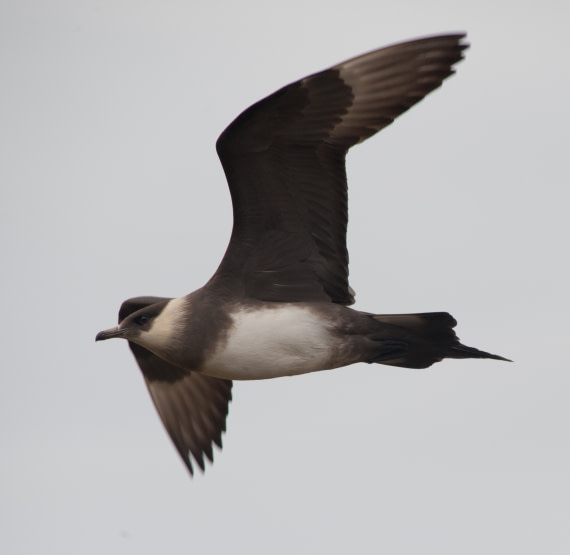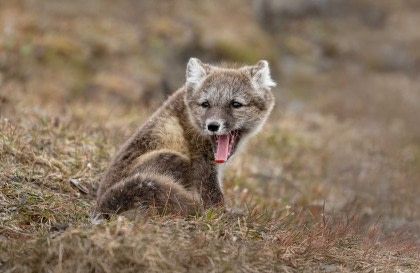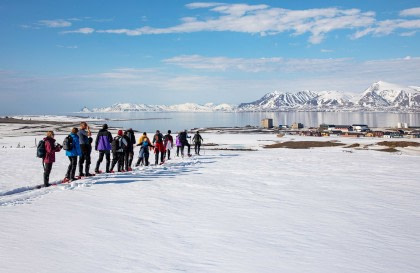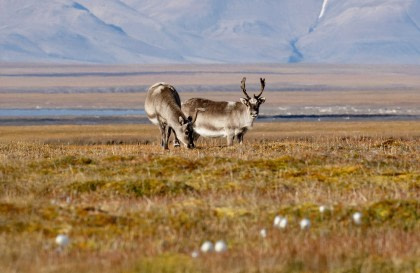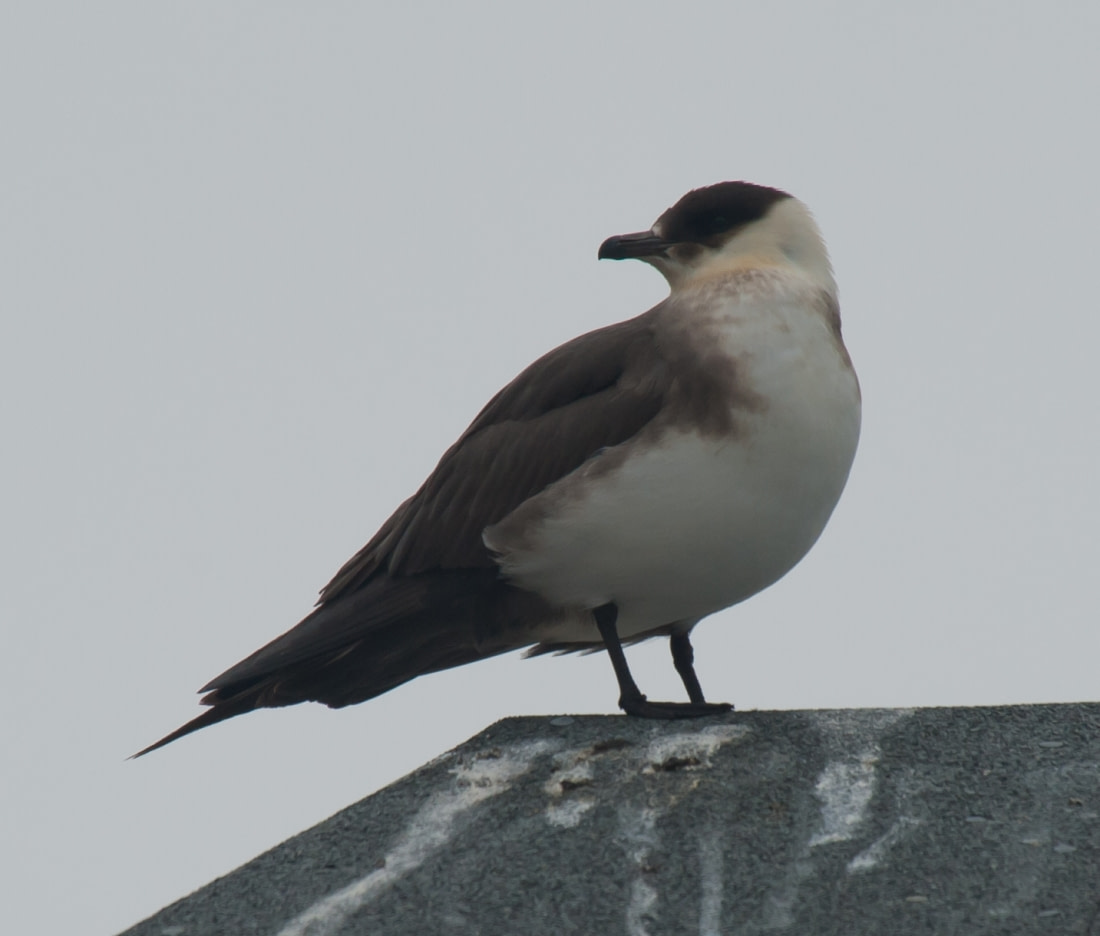Name: Parasitic Jaeger, Arctic Skua, Parasitic Skua (Stercorarius parasiticus)
Length: 40 to 50 cm.
Weight: 300 to 650 grams.
Location: Breeds in Northern North America, Europe, and Asia. Winters in tropical and southern oceans.
Conservation status: Least Concern.
Diet: Fish, small mammals, small birds, insects.
Appearance: Different colourisations depending on location in the world. Lighter versions are brown with white undersides, and a black cap. Darker versions have a dark brown back. A mid-range version also exists. All 3 versions have white flashes on their wings.
How do Parasitic Jaegers feed?
The most notable method Parasitic Jaegers use to feed is that they steal food from other birds, attacking them while they are flying back with their catch.

Are Parasitic Jaegers social?
Parasitic Jaegers will create loose colonies while breeding. They are aggressive in defending their individual nests from other Skuas. Outside of the breeding season they may form small groups of usually no more than 10 individuals.
How fast do Parasitic Jaegers fly?
Parasitic Jaegers can reach speeds of up to 50 km per hour.
What are Parasitic Jaegers birthing rituals like?
Parasitic Jaegers become sexually mature at about 3 years old. They make their nests on tundra and islands, either in loose colonies or in solitary locations. Breeding season is between the middle of May through to the middle of June.
Clutches will contain up to four eggs. The Jaegers are extremely aggressive in protecting their nesting sites and will even attack humans by flying straight at their heads.
The adults are monogamous and will share incubating (1 month) and rearing duties. The chick is able to leave the nest about 1 month after hatching.
How long do Parasitic Jaegers live?
Parasitic Jaegers can live up to 25 years, although 12 years is more common.
How many Parasitic Jaegers are there today?
Parasitic Jaeger worldwide population estimates vary wildly, anywhere from 500,000 to 10 million individuals.

Do Parasitic Jaegers have any natural predators?
Parasitic Jaeger eggs and young are vulnerable to Arctic Foxes.
7 Startling Parasitic Jaeger Facts
- Jaeger is a German word meaning "hunter."
- Although they're considered a "northern" bird because their breeding grounds are in the north, Parasitic Jaegers have been spotted as far south as the South Pole during their winter migration period.
- The Parasitic Jaegers' kleptoparasitism can account for up to 95% of its diet during the winter migration season.
- The Parasitic Jaegers' breeding time is matched to that of other birds like the Puffin so that there are lots of victims for the Jaegers to steal from during the season.
- Parasitic Jaegers are the most numerous of all Jaegers that breed in the Arctic regions.
- Breeding Parasitic Jaegers have long streamers that fly out past their tail, measuring as long as 10.5 centimeters. Non-breeding mature Parasitic Jaegers' streamers are much shorter and are more worn-looking.
- Scientists think that the white flashes on the wings are the Parasitic Jaegers' signal to each other to not steal from them, that they are fellow parasitical hunters.

